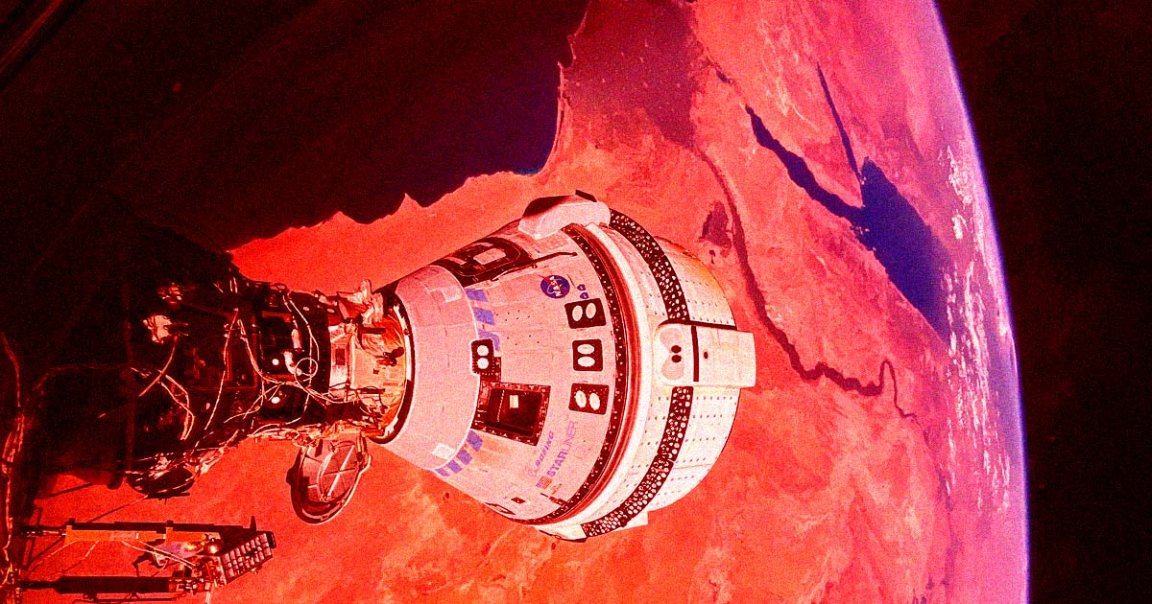
Later this week, Boeing’s plagued Starliner is set to attempt its return journey from the International Space Station.
But instead of ferrying NASA astronauts Butch Wilmore and Suni Williams back to the ground, it’ll be undocking and reentering without any crew on board — after a software update, that is, because it was originally unable to fly without astronauts inside it.
Even before the ill-fated capsule launched in early June, engineers noticed several helium leaks. During Starliner’s docking procedures, the leaks quickly turned into a real problem. The spacecraft missed its first attempt to dock with the space station.
Ever since, Boeing and NASA engineers have been struggling to identify the root cause of the problem.
At first, NASA remained adamant that it was simply a matter of routine procedure to investigate the mishap before imminently returning Wilmore and Williams on board Starliner. The agency repeatedly fought off reports that the two astronauts were “stranded” in space, arguing that engineers just needed a little more time to figure out the issue.
But it didn’t take long for NASA to change its tune. While attempting to duplicate the issue at NASA’s White Sands Test Facility in New Mexico, engineers eventually found what appeared to be the smoking gun, as SpaceNews‘ Jeff Foust details in a detailed new breakdown of the timeline.
A Teflon seal in a valve known as a “poppet” expanded as it was being heated by the nearby thrusters, significantly constraining the flow of the oxidizer — a disturbing finding, because it greatly degraded the thrusters’ performance.
Worse, without being able to perfectly replicate and analyze the issue in the near vacuum of space, engineers weren’t entirely sure how the issue was actually playing out in orbit.
During a late August press conference announcing its decision to send Starliner back empty, NASA commercial crew program manager Steve Stich admitted that “there was just too much uncertainty in the prediction of the thrusters.”
“People really want to understand the physics of what’s going on relative to the physics of the Teflon, what’s causing it to heat up and what’s causing it to contract,” he admitted. “That’s really what the team is off trying to understand. I think the NASA community in general would like to understand a little bit more of the root cause.”
While engineers found that the thrusters had returned to a more regular shape after being fired in space, they were worried that similar deformations might take place during prolonged de-orbit firings.
A lot was on the line. Without perfect control over the thrusters, NASA became worried that the spacecraft could careen out of control.
“For me, one of the really important factors is that we just don’t know how much we can use the thrusters on the way back home before we encounter a problem,” NASA associate administrator for space operations Ken Bowersox said, as quoted by SpaceNews.
“If we had a way to accurately predict what the thrusters would do all the way through the deorbit burn and through the separation sequence, I think we would have taken a different course of action,” Stich said during last month’s teleconference. “But when we looked at the data and looked at the potential for thruster failures with a crew on board… it was just too much risk.”
That’s a polite way of saying that NASA had very serious concerns. According to Faust’s reporting, the saga evolved into “NASA’s biggest human spaceflight safety crisis since the shuttle Columbia accident more than two decades ago.”
Earlier this week, NASA announced that Starliner’s uncrewed undocking will take place as soon as Friday evening.
Wilmore and Williams will stay behind, presumably watching as their ride to space departs without them.
The two astronauts will have to be patient as their ersatz shuttle, SpaceX’s Crew-9 mission, won’t arrive until no sooner than September 24. Even then, the pair will have to wait until the Crew Dragon spacecraft returns to Earth in February, extending what was supposed to be an eight-day mission into an eight-month affair.
More on Starliner: Astronauts Hear Strange Sounds Coming From Boeing’s Cursed Starliner